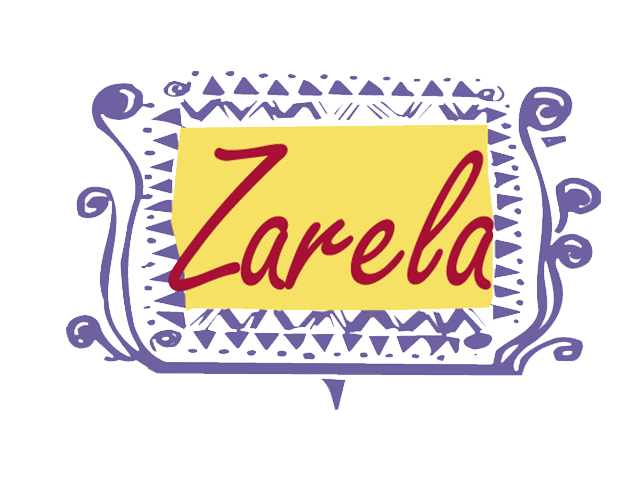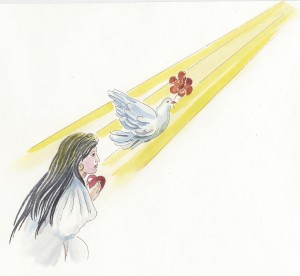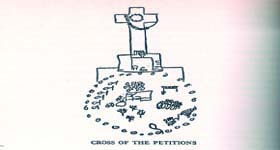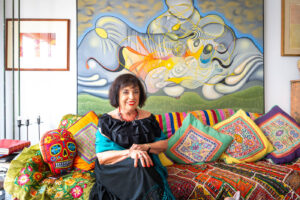Curiously of all the items I posted in the last year, this piece on El Pedimento, got the most hits . I imagine that its popularity is rooted in magic or wishful thinking. It would be wonderful if our wishes became our realities though there’s that famous line “More tears have been shed for prayers that have been answered than those that have gone unanswered.”
I asked my dear friend and brilliant illustrator Rodica Prato (www.rodicaprato.com) to please do one depicting her son’s hopes for the coming year but she chose to do one for me. Why don ‘t you make one and post it or email me a picture and I and I will post it. I’ve talked it over with friends and family and they say that they want to have the option of either giving thanks for blessings received this year or to ask for something for the coming year.
Every time, I’m going to write about a a long-standing tradition, I call my friend, muse and star of my book The Food and Life of Oaxaca (Macmillan 1997) Zoila Mendoza in Teotitlán del Valle, with trepidation to verify that it is still in existence.
We spoke at length about the tradition which it is not limited to New Years’ Eve . More and more people come every year to bring offerings of appreciation for wishes granted and petitions for help that a special chapel has been built a few minutes away from the church but near to La Cruz de los Pedimentos which stands outside Mitla (The Town of Souls in Zapotec) near the town of Juquila.
On New Year’ Eve they light candles, lay flowers and kiss and pray to the cross. They burn copal incense and blow it to form the shape of the sign of the cross. They plan to spend the night there laying out their pedimento, a miniature representation of what they hope to get in the coming year. Zoila said that this year the pedimentos will be very elaborate as the last few years have been very tough on Oaxacans though the unrest has settled and tourists are coming back.
People believe so strongly that there wishes will be granted that they make everything as realistic as possible so there is no confusion. There will be houses made of sticks and clay, horses and other animals inside a corral, corn and maguey fields with furrows, as in the illustration above from Frances Toor’s A Treasury of Mexican Folkways, originally published by Bonanza Books in 1947 and reissued in 1985. It’s remarkable that so many of the traditions she wrote about are still thriving.
Many outsiders join in the celebration. What would you ask for and how would you depict it?
In other parts of Mexico, there might be a New Year’s Eve dinner followed by dancing but most people will interrupt the celebration to go to midnight Mass to welcome the new year. Then it’s on to eat the traditional menudo (tripe soup) to prevent a hangover or just for the pleasure of it.
.



